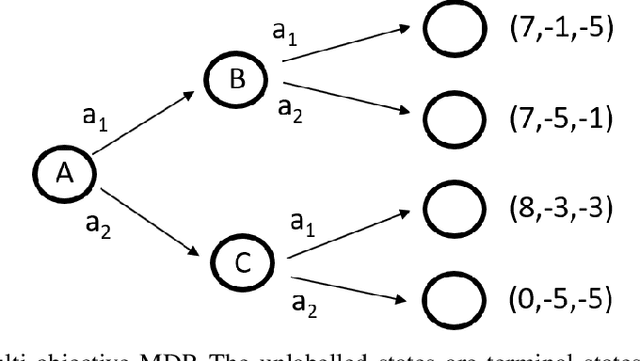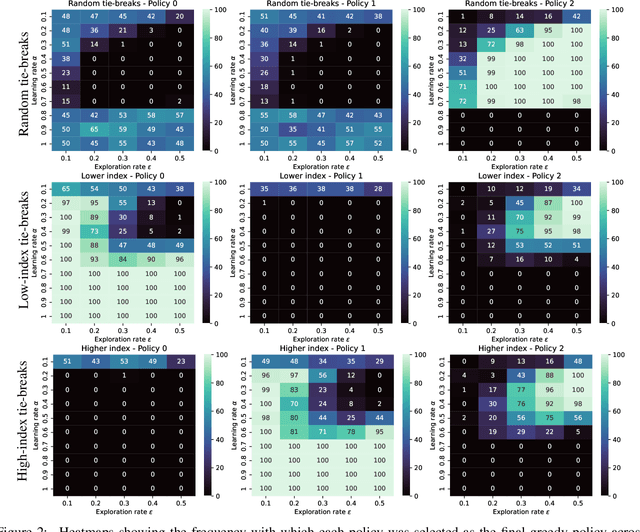Value function interference and greedy action selection in value-based multi-objective reinforcement learning
Paper and Code
Feb 09, 2024



Multi-objective reinforcement learning (MORL) algorithms extend conventional reinforcement learning (RL) to the more general case of problems with multiple, conflicting objectives, represented by vector-valued rewards. Widely-used scalar RL methods such as Q-learning can be modified to handle multiple objectives by (1) learning vector-valued value functions, and (2) performing action selection using a scalarisation or ordering operator which reflects the user's utility with respect to the different objectives. However, as we demonstrate here, if the user's utility function maps widely varying vector-values to similar levels of utility, this can lead to interference in the value-function learned by the agent, leading to convergence to sub-optimal policies. This will be most prevalent in stochastic environments when optimising for the Expected Scalarised Return criterion, but we present a simple example showing that interference can also arise in deterministic environments. We demonstrate empirically that avoiding the use of random tie-breaking when identifying greedy actions can ameliorate, but not fully overcome, the problems caused by value function interference.
 Add to Chrome
Add to Chrome Add to Firefox
Add to Firefox Add to Edge
Add to Edge